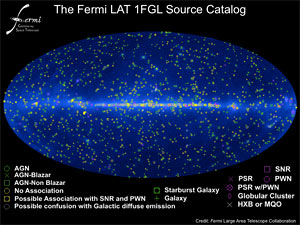From the Chief Operations Officer:
Stanford Board of Overseers Briefing
by Alexander Merola
The Stanford Board of Overseers for mission support provided their formal briefing late last week. This was based on three days of reviews by the BoO concerning overall operations, finance and audit, and human resources. Let me take the opportunity to relate some insights that management learned from their review and report, which will help us provide better services for all of SLAC.
There were continued compliments for areas in which the Operations Directorate is serving SLAC. The new financial model was complimented, as was the concept of SubCouncils, with recognition that some were working better than others. Improvement in some services was noted, including procurement, space management, succession planning, and emergency management. Overall, the staffing changes that we have made in Operations were seen as foundation setting for future improved services and infrastructure.
Read more...
New Cooling Tower 101
Now Cooling Central Campus
Members of the CT101 team atop the newly finished
cooling tower. From left: Richard Maggi, William
Harrison, Donald Dains, Craig Ferguson and Robert Law. (Photo
by Julie Karceski.)
by Javier Sevilla and Craig Ferguson
Yes, it is finished. In the course of about 15 weeks, the old Cooling Tower 101 was demolished, the basin was cleaned, new base anchors installed, piers seismically upgraded, and a new cooling tower was constructed, commissioned and put on line. All the while the critical heat loads, including Building 50 and 84, were cooled by a temporary cooling tower system.
On May 17 the new cooling tower was cooling the critical loads in Building 23, the central utility plant, and by May 19 it was cooling all of SLAC's central campus. Chilled water for air conditioning systems is being provided to buildings.
"This is a nice accomplishment for all involved and it is great to have this project behind us," said CT-101 Project Manager Craig Ferguson, who is also SLAC head of Environment, Safety and Health. "Several organizations came together to pull this off and it was terrific to see so many people jump in to help."
Read more...
Fermi Telescope Releases First Source Catalog

All-sky map showing sources in the new catalog. (Image:
NASA.)
by Lauren Rugani
The first catalog of high-energy gamma-ray sources detected by the Large Area Telescope on the Fermi Gamma-ray Space Telescope was published online Tuesday, expanding upon the
Bright Source List, an early release of the first 200 detected sources published in July 2009.
The Fermi-LAT catalog is the culmination of 11 months of data collection and includes 1451 sources in 10 different classes, providing numerous opportunities for new avenues of research that will help explain some of the most powerful forces shaping our universe. The paper will appear in the June issue of
The Astrophysical Journal Supplement Series,
where it was posted
online May 25.
"For most of the sources we don't know exactly what they are," said Seth Digel, a physicist at SLAC National Accelerator Laboratory and a corresponding author of the paper. The researchers have categorized 630 sources as "unassociated." Hundreds more are associated with a particular type of gamma-ray source based on their location or other properties, but more data is needed to determine their exact nature. Only a handful of the sources are actually identified, with most being pulsars—rotating, magnetized neutron stars that emit broad beams of gamma rays.
Read more...
(Photo by Lauren Rugani.)
Word of the Week: Disc versus Disk
by Lauren Rugani
Discs and disks are both media storage devices whose different spellings have recently come to mean optical and magnetic devices, respectively—a distinction that most likely arose from nothing more than the linguistic preferences of the inventors.
The American computer company IBM introduced a magnetic storage device in 1971 called the
floppy disk. Later that decade, Philips launched an optically written
disc and opted for the European version of the word. Coincidentally, the two spellings were connected to two different products, an
association still made today in the computer industry.
|




 <%
Response.AddHeader "Last-modified", getArticleDate()
'Response.AddHeader "Last-modified","Mon, 01 Sep 1997 01:03:33 GMT"
'Monday, December 06, 2010
%>
<%
Response.AddHeader "Last-modified", getArticleDate()
'Response.AddHeader "Last-modified","Mon, 01 Sep 1997 01:03:33 GMT"
'Monday, December 06, 2010
%>